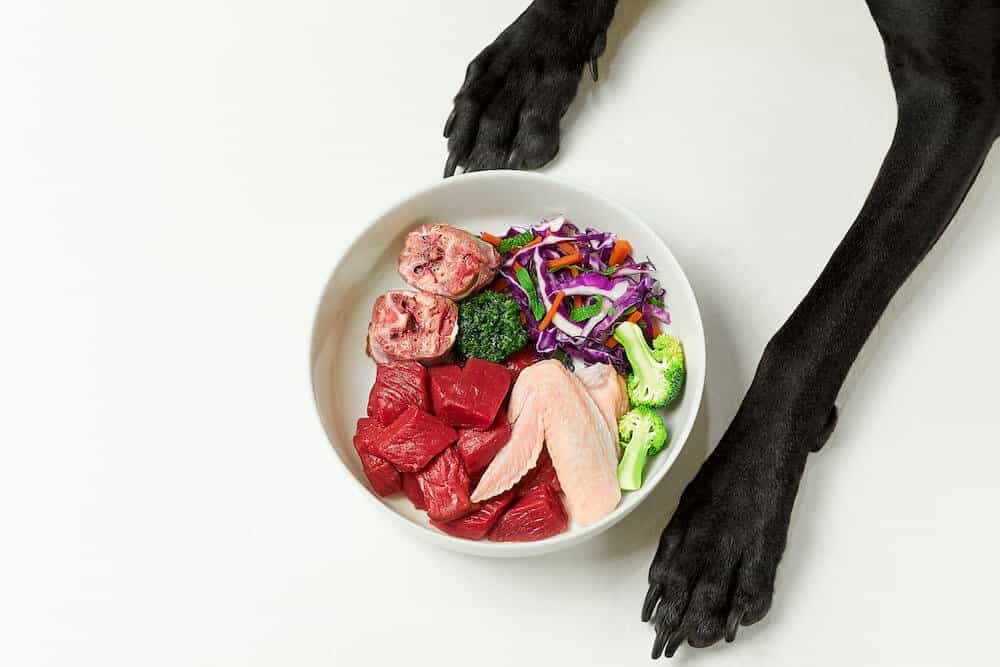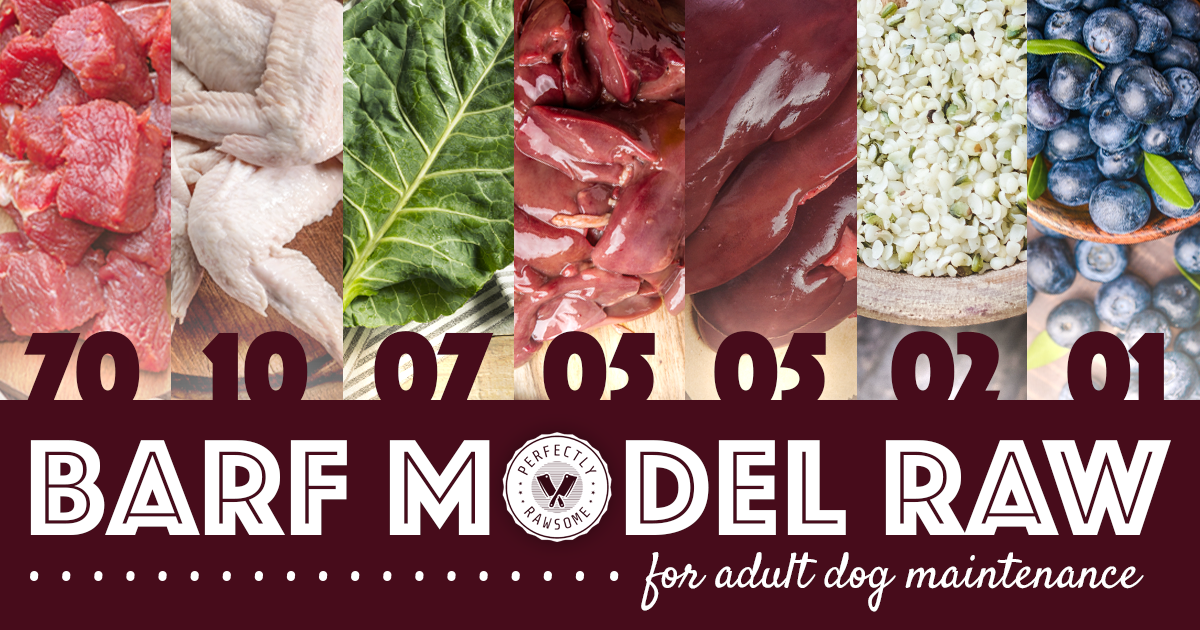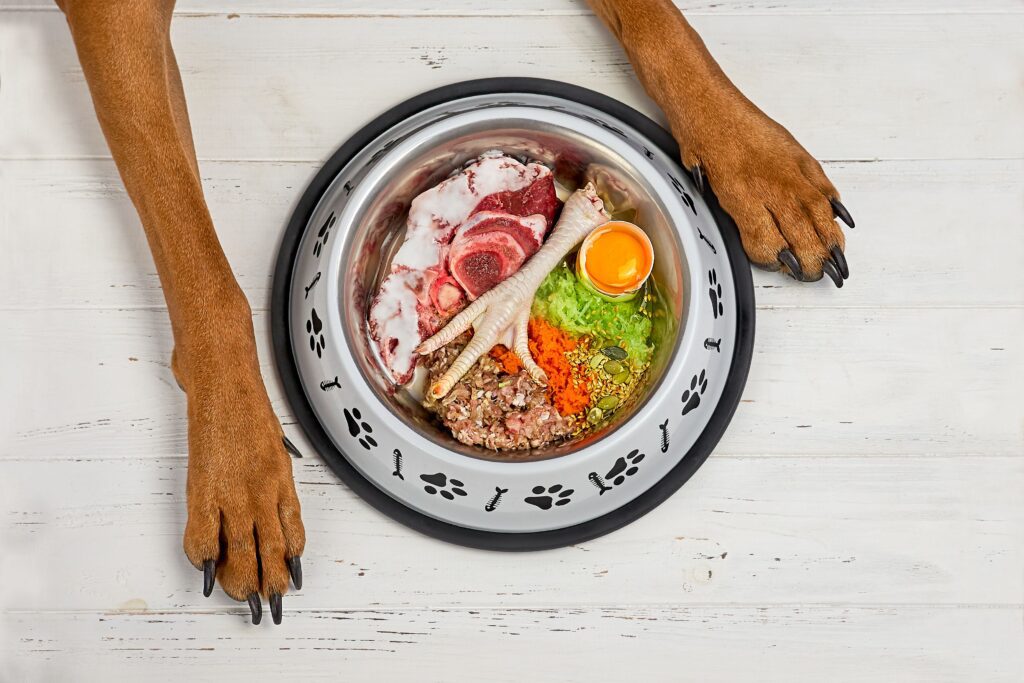Raw diet for dogs consist of uncooked meat, bones, and vegetables. Advocates believe it mimics a dog’s natural eating habits.
Table of Contents
Raw feeding emphasizes natural, unprocessed ingredients. Supporters argue it improves digestion, skin health, and energy levels. Fresh, raw foods often contain vital nutrients that are lost during cooking. The diet typically includes muscle meat, organ meat, bones, and vegetables. It’s essential to ensure balanced nutrition to avoid deficiencies.
Always consult a vet before switching to a raw diet. Some experts warn of potential risks, including bacterial contamination and choking hazards. Proper handling and sourcing of ingredients are crucial. A well-planned raw diet can be beneficial, but it requires careful preparation and vigilance.


Benefits Of Raw Diet
A raw diet can greatly benefit your dog. It can improve their overall health. This diet includes raw meat, bones, and vegetables. Many dog owners see positive changes in their pets. Let’s explore some key benefits.
Improved Digestion
Dogs often digest raw food better. Raw diets are more natural for them. The enzymes in raw food help break it down. This makes digestion easier.
Processed foods can cause issues. These include gas, bloating, and diarrhea. Raw diets can reduce these problems. Your dog will feel more comfortable.
Here is a comparison:
| Processed Food | Raw Food |
|---|---|
| Hard to digest | Easy to digest |
| Causes gas and bloating | Reduces digestive issues |
| Contains fillers | Natural ingredients |
Healthier Skin And Coat
A raw diet can improve your dog’s skin and coat. Raw food contains essential fatty acids. These nutrients are key for healthy skin.
Processed foods often lack these nutrients. This can lead to dry skin and dull coats. A raw diet can help make your dog’s coat shiny.
Benefits include:
- Shiny coat
- Less shedding
- Reduced skin allergies
A raw diet can also reduce itching. Your dog will be happier and more comfortable.
Nutritional Components
A raw diet for dogs provides essential nutrients for their health. Understanding the nutritional components is crucial. This section breaks down the key elements of a raw diet.
Proteins And Fats
Proteins are the building blocks for your dog’s muscles and tissues. High-quality raw meat provides essential amino acids. These are crucial for growth, maintenance, and repair. Dogs need a variety of proteins. Common sources include chicken, beef, and fish.
Fats are a vital energy source. They also support healthy skin and coat. Raw diets usually contain animal fats. These are more digestible for dogs. Common fat sources include fish oil and chicken fat.
| Protein Source | Fat Source |
|---|---|
| Chicken | Chicken Fat |
| Beef | Fish Oil |
| Fish | Beef Fat |
Vitamins And Minerals
Vitamins are necessary for overall health. They support immune function, vision, and skin health. Raw diets provide natural sources of vitamins. Liver and green leafy vegetables are rich in vitamins A and K.
Minerals are crucial for bone health and metabolic functions. Raw bones provide calcium and phosphorus. Organ meats like liver offer essential trace minerals. Green vegetables add magnesium and potassium to the diet.
- Vitamins: A, B, C, D, E, K
- Minerals: Calcium, Phosphorus, Magnesium, Potassium
Ensuring your dog receives balanced nutrients is key. A raw diet helps meet these needs naturally.
Common Ingredients
A raw diet for dogs includes a variety of ingredients. These ingredients are natural and support your dog’s health. Understanding the common ingredients is key for a balanced diet. Let’s explore the primary components of a raw diet.
Meats And Bones
Meats and bones are the foundation of a raw diet. They provide essential proteins and minerals. Below are some common meats and bones used:
- Chicken: Rich in protein and easily digestible.
- Beef: High in iron and great for muscle growth.
- Lamb: Contains healthy fats and amino acids.
- Turkey: Lean protein source with low fat content.
- Duck: High in iron and B vitamins.
Bones are crucial for dental health and calcium intake. Common bones include:
- Chicken necks: Soft and easy to chew.
- Beef marrow bones: Great for gnawing and teeth cleaning.
- Lamb ribs: Rich in nutrients and good for dental health.
Fruits And Vegetables
Fruits and vegetables add fiber, vitamins, and antioxidants to your dog’s diet. They promote a healthy digestive system and boost the immune system. Common fruits and vegetables include:
| Fruits | Vegetables |
|---|---|
| Apples: High in fiber and vitamin C. | Carrots: Great for vision and low in calories. |
| Blueberries: Packed with antioxidants and vitamins. | Spinach: Rich in iron and calcium. |
| Bananas: Source of potassium and energy. | Broccoli: High in fiber and vitamin K. |
| Watermelon: Hydrating and low in calories. | Sweet potatoes: Full of vitamins and fiber. |
These ingredients ensure your dog gets a variety of nutrients. A balanced mix of meats, bones, fruits, and vegetables promotes overall health.


Preparation Tips
Transitioning your dog to a raw diet requires proper preparation. This ensures their safety and well-being. Below are some essential tips for preparing raw meals for your furry friend.
Safe Handling
Safe handling of raw food is crucial to avoid contamination. Always wash your hands before and after touching raw meat.
- Use separate cutting boards for raw meat and other foods.
- Thoroughly clean all utensils and surfaces after use.
- Store raw food in sealed containers in the fridge or freezer.
Keep raw meat at the correct temperature to prevent bacterial growth. Always thaw meat in the refrigerator, not on the counter.
Balanced Meals
Creating balanced meals ensures your dog gets all essential nutrients. A typical raw diet includes muscle meat, organs, and bones.
| Component | Percentage |
|---|---|
| Muscle Meat | 70% |
| Organs (e.g., liver, kidney) | 10% |
| Edible Bones | 10% |
| Vegetables and Fruits | 10% |
Ensure you include a variety of protein sources. This helps provide a range of vitamins and minerals.
- Chicken
- Beef
- Lamb
- Fish
Supplement your dog’s diet with omega-3 fatty acids and probiotics. These support their overall health and digestion.
Transitioning To Raw
Transitioning your dog to a raw diet can be a rewarding journey. It requires careful planning and patience to ensure a smooth change. Below, we will discuss the steps for a successful transition.
Gradual Introduction
Start by slowly introducing raw food into your dog’s current diet. Begin with small amounts mixed with their regular food. Increase the amount of raw food gradually over a week or two.
- Day 1-3: 25% raw food, 75% regular food
- Day 4-6: 50% raw food, 50% regular food
- Day 7-9: 75% raw food, 25% regular food
- Day 10+: 100% raw food
This gradual approach helps your dog adjust to the new diet. It also minimizes digestive upset.
Monitoring Your Dog
Keep a close eye on your dog during the transition. Watch for changes in their stool, energy levels, and overall health. Healthy stools should be firm and well-formed.
| Signs to Watch | What to Do |
|---|---|
| Loose stools | Reduce raw food, increase gradually |
| Lethargy | Consult your vet |
| Increased energy | Continue as planned |
Consult your vet if you notice any concerning signs. They can provide guidance specific to your dog’s needs. Always ensure your dog has access to fresh water.


Potential Risks
Feeding your dog a raw diet can come with many potential risks. While some pet owners find benefits, others face serious issues. Understanding these risks can help keep your dog safe and healthy.
Bacterial Contamination
Raw meat can carry harmful bacteria. Common bacteria include Salmonella and E. coli. These can cause severe illness in dogs and humans. Always handle raw meat with care.
Use clean surfaces and tools when preparing raw meals. Wash your hands thoroughly. Store raw meat in a separate fridge section. This helps prevent cross-contamination.
Here is a simple table to show the risks of common bacteria:
| Bacteria | Symptoms in Dogs | Symptoms in Humans |
|---|---|---|
| Salmonella | Diarrhea, Vomiting, Fever | Nausea, Abdominal Pain, Diarrhea |
| E. coli | Severe Diarrhea, Dehydration | Stomach Cramps, Diarrhea |
Nutritional Imbalance
A raw diet may lack essential nutrients. Dogs need a balanced diet to stay healthy. Missing nutrients can cause long-term health problems.
Ensure the diet includes:
- Protein from meat
- Calcium from bones
- Vitamins from vegetables
Consult a vet to create a balanced meal plan. They can guide you on proper portions and ingredients. Avoid feeding too much of one type of food.
Here is a checklist for a balanced raw diet:
- 50% Raw Meat
- 10% Edible Bones
- 10% Organ Meat
- 20% Vegetables
- 10% Supplements
Following these guidelines can help reduce the risks. Always monitor your dog’s health and adjust the diet as needed.
Veterinarian Advice
Feeding your dog a raw diet can offer many benefits. However, it’s crucial to seek advice from a veterinarian. This ensures your dog’s health and safety.
Consultation Importance
Before starting a raw diet, consult with your veterinarian. A vet can assess your dog’s health and nutritional needs. This helps create a balanced diet plan.
Veterinarians can identify any specific health concerns. They can also recommend suitable raw food options. This ensures your pet gets the right nutrients.
Regular Check-ups
Regular check-ups are essential when feeding a raw diet. Routine visits help monitor your dog’s health. They ensure the diet is working well.
During check-ups, vets can check for nutrient deficiencies. They can also spot any potential health issues early. This helps keep your dog healthy and happy.
| Check-Up Frequency | Benefits |
|---|---|
| Monthly | Early detection of issues |
| Quarterly | Monitor nutritional balance |
| Bi-Annually | Overall health assessment |
Regular check-ups help ensure your dog stays healthy on a raw diet. Always follow your vet’s advice for the best results.
Success Stories
Many dog owners have switched to a raw diet for their pets. This switch has yielded incredible results. Let’s dive into some success stories.
Case Studies
| Dog Name | Breed | Health Improvements |
|---|---|---|
| Buddy | Golden Retriever |
|
| Luna | German Shepherd |
|
Owner Testimonials
Emily from New York said, “Switching to a raw diet transformed Max. His coat is so shiny now!”
John from California shared, “After switching, Bella’s allergies disappeared. She seems happier and more active.”
Susan from Texas mentioned, “My vet noticed Rocky’s teeth were much cleaner during his last check-up.”
Frequently Asked Questions
Is A Raw Food Diet Good For Dogs?
A raw food diet can be beneficial for some dogs, offering improved coat, energy, and digestion. Always consult your vet.
Do Vets Recommend A Raw Diet For Dogs?
Most vets do not recommend a raw diet for dogs. They cite risks like bacterial contamination and nutritional imbalances.
What Else Can I Feed My Dog On A Raw Diet?
You can feed your dog raw meats like chicken, turkey, and beef. Include organ meats, fish, and eggs. Add vegetables like carrots, broccoli, and spinach. Fruits like apples and blueberries are good. Supplement with bones and fish oil. Always ensure the food is fresh and properly sourced.
How Do I Feed My Dog A Raw Diet?
Start by choosing quality, fresh meats and bones. Include organ meats and vegetables. Ensure balanced nutrients with supplements. Transition gradually to avoid digestive issues. Consult a vet for personalized advice.
What Is A Raw Diet For Dogs?
A raw diet for dogs includes uncooked meat, bones, fruits, and vegetables.
Conclusion
Choosing a raw diet for dogs can boost their health and energy levels. Always consult your vet before making dietary changes. Raw diets can offer natural nutrition and improve digestion. Ensure you provide balanced meals to meet your dog’s needs.
A raw diet can enhance your dog’s overall well-being and happiness.


